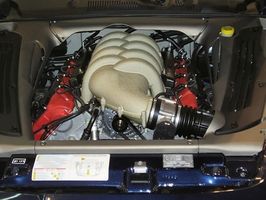A transmission flush has become a routine vehicle maintenance procedure. Manufacturers now recommend performing a transmission flush once every 30,000 miles. Transmission flushes offer many advantages to vehicles that allow them to function more effectively as well as last longer.
Fluid Removal and Replacement
The process of a transmission flush is a complete exchange of the transmission fluid, which is what helps the transmission to operate effectively. A transmission flush consists of changing out the old fluid—that can be identified due to its color—and replacing it with new transmission fluid, which normally amounts to about five quarts. Transmission filters are also frequently changed as well, which allow the transmission to function properly and increase its longevity.
Power-Flow Interruption
Mostly applicable to manual transmissions, power-flow interruption is a problem that occurs when shifting gears. During shifting, the transmission loses power slightly. Automatic transmissions are much better at maintaining power than manual transmissions; however, transmission fluid is still required to make the shift as smooth and uninterrupted as possible. Transmission flushes help to decrease power-flow interruption, which directly affects the “smoothness” while changing speeds on the road.
Wear and Tear
The main selling point for transmission flushes is to prevent less wear and tear on the transmission over time. Vehicles without transmission fluid—or fresh transmission fluid—will be very short-lived and ultimately need a new transmission.
Transmission Service
Considered another type of routine transmission maintenance—a transmission service is not the same as a transmission flush. A transmission service only removes part of the transmission fluid rather than the entire amount that a transmission flush does. Although transmission services can be used as a temporary replacement for transmission flushes, they are not as effective.

The Advantages of a Transmission Flush
by
Tags:

Leave a Reply